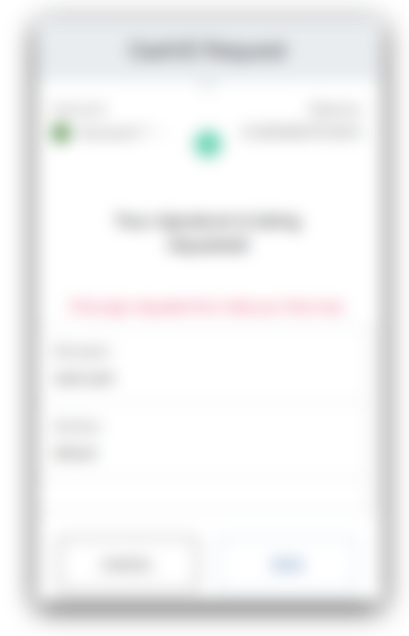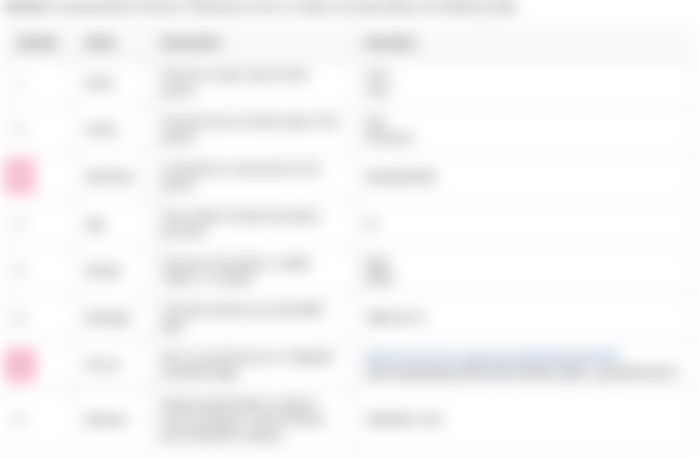How to implement CashID ("Login with Badger Wallet") on your site
What is a "CashID"?
CashID is basically "Login with Bitcoin Cash" button. Here is the specification, created by JonathanSilverblood. This article will mostly concentrate on how to implement it.
Overview
The only client that we know of that implements CashID is Badger Wallet, so we will implement the CashID using that particular wallet. We also only implement the "authentication" part of the spec.

Step-by-step
User clicks "CashID"

User clicks "CashID" or "Login with CashID".
At this moment you need to check a few things:
1) Is Badger wallet installed?
2) Is it unlocked?
JavaScript in the browser:
if (typeof web4bch === 'undefined' || typeof web4bch.bch === 'undefined') {
alert('Please install Badger wallet first');
window.open('https://badger.bitcoin.com/', '_blank')
return;
}
if (typeof web4bch.bch.defaultAccount === 'undefined') {
alert('Please unlock your Badger wallet');
return;
}Of course, all JS here is just an example - change it to your own will.
web4bch is the variable that is injected by Badger wallet to your code if it is installed.
web4bch.bch.defaultAccount is the current account that user have selected in Badger Wallet.
If all of this goes well - we need to ask our server to generate us a "request" to sign.
Ask the server for a request

What is a "request"?
It's a string that looks like this:
cashid:yourserver.com/path?x=NIymFmzrktywUGWhcAvGGYyk2BRr2PobThis is the request for default action (i.e. login).
The important parts here are:
yourserver.com/path - it's a path that Badger wallet will call using the https scheme, like this:
POST https://yourserver.com/path?x=NIymFmzrktywUGWhcAvGGYyk2BRr2Pobis the part with the nonce,
where NIymFmzrktywUGWhcAvGGYyk2BRr2Pob is the "nonce".
A "nonce" is a random string that is hard to guess. From the spec:
The Nonce parameter acts as a replay-protection mechanism, by making each request challenge and response unique. Each Nonce can only be used a single time during its lifespan and should expire if left unused for a significant amount of time.
The service provider should not process requests that it has not issued nonces for, except for User actions that have a valid and recent Timestamp according to ISO-8601 as their nonce value.
What are we protecting here from? If someone intercepts your request - they will be able to replay it and authenticate as you.
That's why it's important that:
Your server issues the nonce and the request, not the client (i.e. do not generate nonce in Javascript in the browser)
The server must remember the requests it gave out (until their expiration)
The server must expire all requests if they are not used
When server gets the request with the request back - it must check that it has issued this nonce, it hasn't expired and it hasn't been used yet
Keep the nonce reasonably long, but not too short. The attacker shouldn't be able to guess the nonce.
Note about session_id: if you have some identifier of the session that you want to send to the server - you can use this request type (a=login):
cashid:yourserver.com/path?a=login&d=123-123&x=NIymFmzrktywUGWhcAvGGYyk2BRr2Pobwhere d parameter would contain anything that you need to identify session on the server. (Badger Wallet won't send your cookies along to your server)
The request has a lot more parameters that we'll show in a bit.
JavaScript in browser:
const r = await axios.get('https://yourserver.com/cashid/new_request');
const request = r.data.request;(axiosis the library to make http request from Javascript, you can also use fetch)
This is the code assuming that if you call https://yourserver.com/cashid/request, you'll get something like this in return:
{"request": "cashid:yourserver.com/path?x=NIymFmzrktywUGWhcAvGGYyk2BRr2Pob"}This is the part that you need to implement on your server.
Ask the Badger Wallet to sign the request

Assuming you have the request variable in JavaScript, now you can make a call to Badger to sign it:
web4bch.bch.sign(
web4bch.bch.defaultAccount,
request,
async (err) => {
if (err) {
alert(`Error: ${err}`);
return
}
// TODO: Success
}
);If the request is well-formed, the user will see something like this:

err variable in the callback, will be filled with the error.If the user clicks "Sign" - Badger will sign the request variable and send a POST https request to the path from request.
Request to the server

At this point Badger will call your server. If your request is cashid:yourserver.com/path?x=NIymFmzrktywUGWhcAvGGYyk2BRr2Pob - the request would be made to https://yourserver.com/path.
The request will be POST to https:// with JSON payload like this:
{
"request": "cashid:yourserver.com/path?x=NIymFmzrktywUGWhcAvGGYyk2BRr2Pob",
"address": "bitcoincash:qqxksj....",
"signature": "6X1Gdzztj1tkUGTAN4hhPfPt6Nk/aMGMdbVSZJ6FGiKUdP..."
}Important: Badger Wallet will not send any cookies with your request. That's why you can't immediately log the user in, unless you can somehow bring their session up using the a=login&d=123-123 parameter described above.
Note about https and localhost: The request will always be made to https, so when you're developing locally - something like serveo.net can greatly help here. If your local server is running on port 8000 on localhost, run this:
ssh -R 80:localhost:8000 serveo.netYou'll get https URL (for ex. https://aveo.serveo.net), which you should use in your generated requests, like this:
cashid:ab6eda4f.ngrok.io/path?x=...If you don't have working ssh - you can try ngrok. Please note that you can install ngrok, but it's not open source, so you don't know what's running.
For the same 8000 example:
ngrok http localhost:8000Check the request
On the server:
You have issued this request with this nonce (parse the
requestas a URL and check thexparameter (nonce));It has not expired;
It was not used before.
You can use something like Redis, generate a string, put the request string there when it's generated with an expiration of 5 minutes and as soon as it is used - delete the key.
Check the signature
It's the most important part. Check that the incoming request string was signed and that resulting signature matches the incoming address.
Note: the address is going to be in CashAddr format ("bicoincash:qq12ab..."), which you need to convert to the so-called "legacy" format ("1AbD...").
Example code in PHP:
$address = CashAddress::new2old($cashAddress, true);
$b = new BitcoinECDSA();
if (!$b->checkSignatureForMessage($address, $signature, $request)) {
return $this->error('signature mismatch');
}
// send {"status": 0}The CashAddress class is here.
The BitcoinECDSA is from bitcoin-php/bitcoin-ecdsa (composer require bitcoin-php/bitcoin-ecdsa).
Note (Nov 1, 2019): Badger Wallet does not report any 4xx or 5xx server errors to the user. If you return 4xx code - Badger doesn't close the "sign" window and just shows the balance to user (which is very confusing) and it doesn't call your (err) => callback either. You should always return HTTP code 200, even if an error has happened (as clarified by the author of the specification).
The specification says that you should return this to indicate success:
{
"status": 0
}but in our tests, Badger seems to be ok with any text response.
The specification lists a lot of status codes that you should return to indicate an error, i.e. {"status": 142} to indicate that the request has expired.
At this point you should remember on server that the particular request is associated with this particular address. We can trust this information. If you can bring the session in (via data parameter for example, in the note above) you are done now, just associate the address with the session, otherwise you need one more step.
The user is now logged in

Now we can do a call with our session cookie to the server.
Remember the code we used for signing? Let's update it to make a second call:
web4bch.bch.sign(
web4bch.bch.defaultAccount,
request,
async (err) => {
if (err) {
alert(`Error: ${err}`);
return
}
const r = await axios.post("/cashid/associate", {request: request});
document.location.reload();
}
);This call will be with our session cookies, so now we can check that we have (on server) a request or nonce associated with some address and now we can assign this address to the newly created user or to the logged in user.
Note: At this stage you should definitely delete the "request" on server to avoid "replay" attack - i.e. someone else asking to be associated with your request.
How to get more information, like name, picture, email
CashID spec details a few more parameters that you can add to your signing request here.
If you want a nickname and a picture, you can make a request like this:

Where o is for "optional" and r is for "required" fields.
The 38 part actually means "3" and "8" from the i "identity" table:

We haven't yet used this on read.cash, because we need to make sure that the name is unique and follows a specific pattern (letters, dots, dashes, no spaces), so it's no use for us if a user signs malformed or non-unique name, but it's important to know that it's there.
We haven't tested yet if Badger supports this part of specification.
QR-codes-based authentication
You can also use the Android app developed by the CashID author Jonathan Silverblood to try QR-codes-based workflow. We haven't used it yet, but we'll try to implement it too.









This part is not quite right. The nonce is a unique identifier for the authentication request. There is an action called "login" with which you should pass the "data" field as your session identifier. I think this is the one action that badger has suppoert for right now, but the identity manager supports many more.